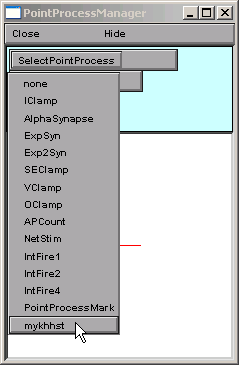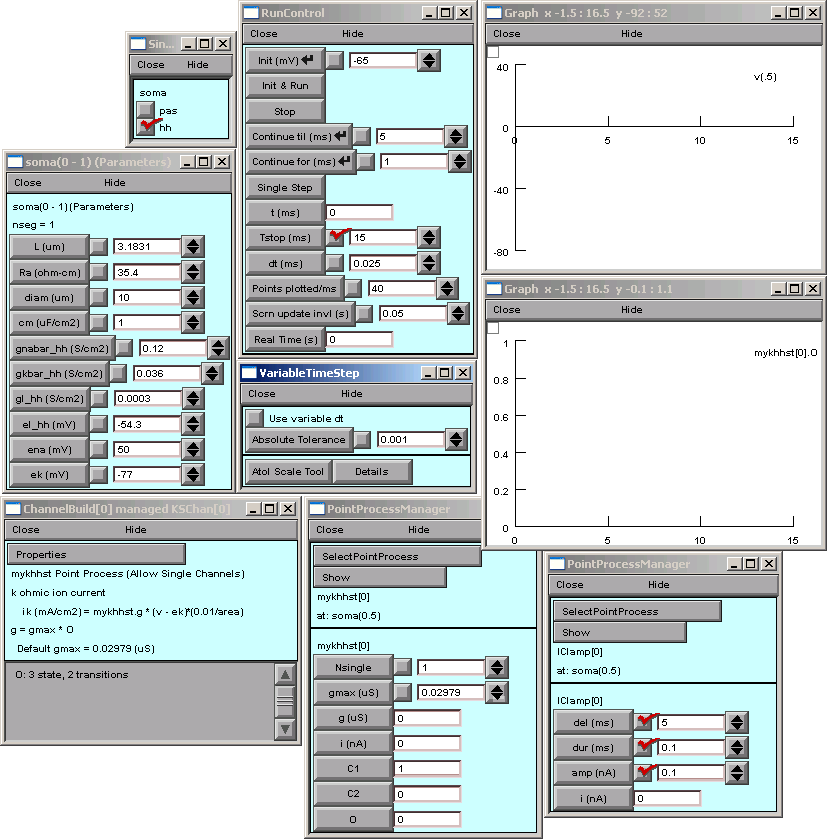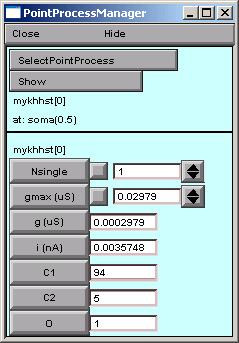The Point Process Manager should now look like this
Important notes about Nsingle and gmax.Let's also bring up a "State axis" graph and configure it to plot mykhhst[0].O (that first 0 is a zero, and the other O is an upper case letter O). This will show the total number of open channels as a function of time.
- The Nsingle and gmax parameters are known to hoc as mykhhst[0].Nsingle and mykhhst[0].gmax.
- Nsingle serves two purposes:
- If Nsingle == 0, gating will be deterministic, in which case the parameter gmax will be the maximum conductance of the Point Process when it is completely activated.
- If Nsingle is > 0, the Channel Builder simulates independent stochastic gating of Nsingle channels, in which case gmax is the conductance of a single open channel.
- If you change Nsingle from 1 to a new integer value k, you will need to divide gmax by k if you want to keep the total peak conductance constant.
Finally, bring up a VariableTimeStep panel (NEURON Main Menu / Tools / VariableStepControl) so we can experiment with the use of adaptive integration.
A complete custom user interface, including model specification, simulation control, and instrumentation, would look something like this. I find it convenient to arrange things so that tools that specify the properties of the model cell (SingleCompartment, ChannelBuild[0], the PointProcessManager for mykhhst[0], and the soma's parameter panel) are to the left and down, simulation control tools (RunControl, VariableTimeStep) are top center, and instrumentation tools (the IClamp's PointProcessManager, and the two Graphs) are up and to the right.

This would be a good time to save everything to a session file called test_stochastic.ses.
